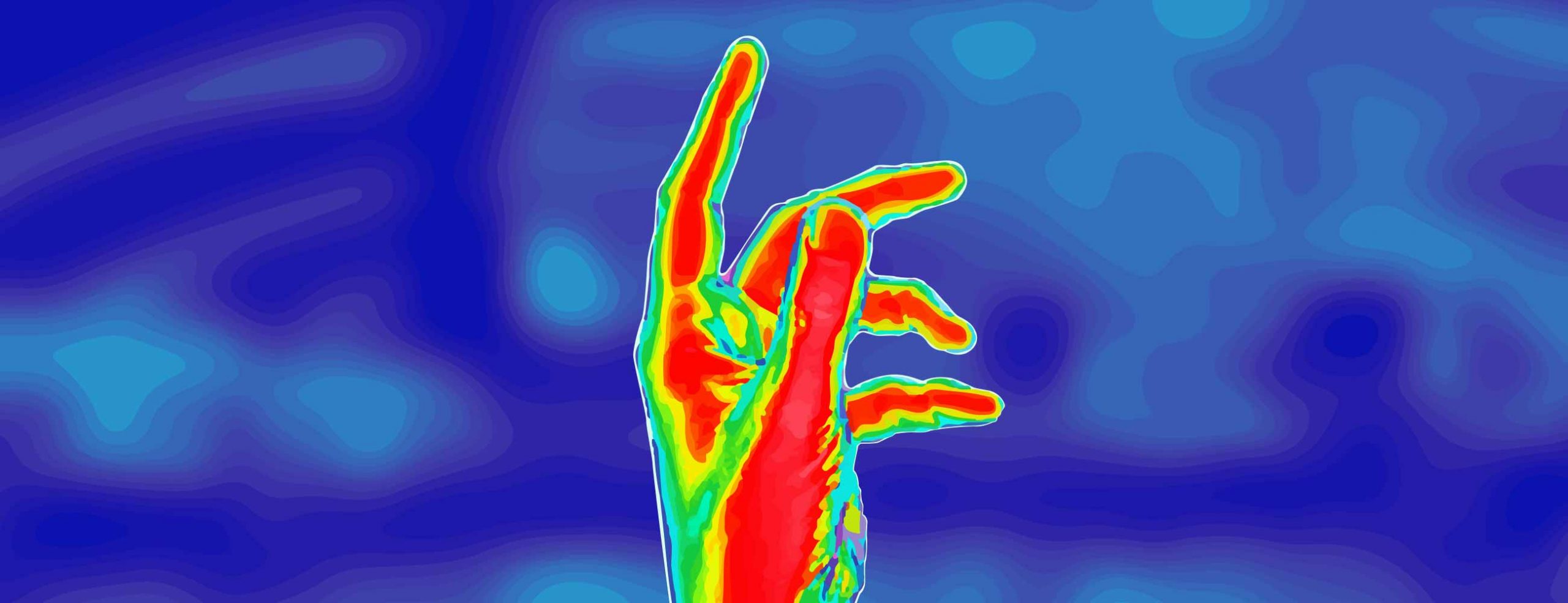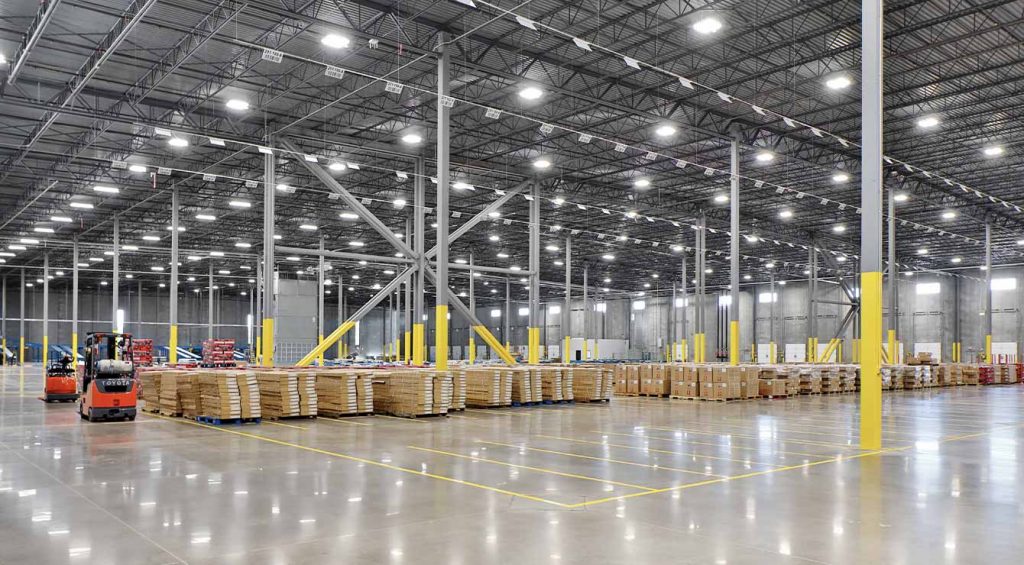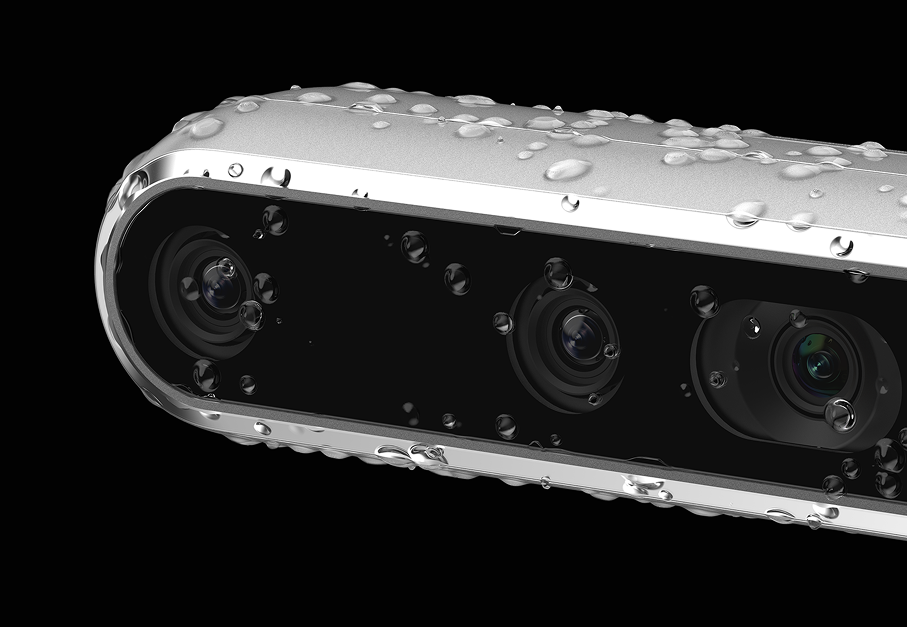
Enhanced
depth quality
with IR
The RealSense™ Depth Camera with IR pass filter family expands our portfolio targeting the growing robotic market. The D400f family utilizes an IR pass filter to enhance depth quality and performance range in many robotic environments.

Solutions that
work
Resolves false depth seen in scenes with repetitive vertical pattern, such as poles in airport, vertical blinds, pipes in ceiling, floor drains and small floor tiles.
Download the report
Robotics in the
real world
The D400f family is an excellent addition to the D400 family which is used in a wide range of robotic use cases.


See better with
infrared
Cut the
glare
Mitigates glare from overhead lights reflected by shiny floors and enhances the textured IR projector pattern.
Why
RealSense?

Unmatched Depth Precision
RealSense cameras deliver millimeter-level depth accuracy in real time, enabling smarter robotics, object tracking, and spatial awareness in dynamic environments.

Ready for Any Environment
From warehouse automation to outdoor use, RealSense stereo depth cameras and ruggedized models are built to perform reliably—even in challenging lighting or weather conditions.

Scalable and Modular
With flexible modules, onboard processing options, and easy integration, RealSense solutions scale from prototypes to production with ease—empowering developers and businesses alike.

Leveraging the power of
SDK 2.0
Build the future with the open source RealSense™ SDK 2.0 and depth tools. Platform independent, the SDK supports all current RealSense depth cameras and includes wrappers for many common platforms and languages.
Download SDK 2.0
Get the RealSense SDK 2.0 to kick off your project
Documentation
Find answers to your questions with our how-to guides and articles.
Code Samples
Get started fast with depth development.
FAQs
What is RealSense™ Depth Camera D400f family
The RealSense™ Depth Camera D400f family features our widest field of view global shutter cameras with an IR pass filter over the depth lenses.
What is the size of the D400f cameras compared to the D400?
The filter adds around 8mm to the Depth, so for example, D435f or D435if cameras’ dimensions are: 90 mm (L) x 25.8 mm (H) x 25 mm (D).
Why add an IR pass filter?
There are various benefits to adding an IR pass filter, including:
- The IR pass filter increases the relative strength of the textured IR projector pattern. This enhances the quality of the depth noise and performance range in many robotic environments.
- The IR pass filter improves the stereo camera’s depth quality in scenes with repetitive vertical patterns, such as poles in airport, vertical blinds, pipes in ceiling, floor drains or small floor tiles.
- The IR pass filter mitigates visible reflections such as overhead lights reflected by shiny floors or tables.
- The IR pass filter increases the range performance in indoor no-texture environment such as white-walls.
For further details please refer to Optical Filters for RealSense™ Depth Cameras D400 and mitigate-repetitive-pattern-effect-stereo-depth-cameras
Why other D400 cameras don’t have an IR pass filter?
Most of the RealSense™ Depth Camera D400 family have an All-pass filter. There are trade-offs between using an IR-pass to an All-pass filter. The All-pass filter advantages include:
- Depth noise on indoor textured surfaces is typically better with visible light included.
- Better range for textured walls and objects with ambient visible light.
- For IR-only, the indoor range is directly limited by the power of the laser projector – much like trying to illuminate a room in the dark with only the flashlight from an iPhone.
- IR-only may lead to lower XY resolution and edge quality. For IR-only, you primarily see depth around the projected spots. So if a camera projects 5000 spots, both X-Y and the depth resolution may be reduced.
- The total amount of light seen by the sensor is reduced when using IR-only filter, so the exposure time is generally increased. This can impact motion sensitivity and frame rate.
- The indoor “dynamic range-of-range” is reduced by using an IR-only filter. The nearest spots will be saturated and farthest spots will not be visible. Many are familiar with this from experience with using a flash to take a picture in a dark room. Near objects are too bright and far objects are too dark.
- IR light is poorly reflected from many objects so if we only see IR we may see many more “holes” in the depth image. For example, hair, carpets, or jeans may be more difficult to see.
What are the target markets?
The D400-f is a family of enhanced IR depth cameras targeting the growing robotic market. . Any application that works in the scenes described above, such as scenes with overhead lights reflected by shiny floors or tables or non-texture scenes such as white walls, would see improvement with the D400f series depth cameras. Robots that suffer from lower depth quality due to repetitive vertical patterns will also benefit from this camera.
Are there module versions of the D400f product family?
No. The RealSense™ Depth Camera D400f series use existing D400 modules. The filter is directly applied over the external surface of the glass cover window.
Can I apply a filter and build a similar camera?
Yes, you can apply a filter to an RealSense™ Depth Camera D435 or D435i. The D435f camera’s filter is 750nm near-infrared filter (CLAREX® NIR-75N). Please check the datasheet for further information.
What is in the box?
The box product has a camera, a cable and get started guide.
Is there a bulk version?
Yes. The RealSense™ Depth Camera D400f series come in 30 pack bulk version with only the peripheral – no cable or retail box.
Where can I purchase?
Head to our store at https://store.realsenseai.com/ or through any authorized Intel Distributor.
Explore Stereo Depth with IR Pass Filter


